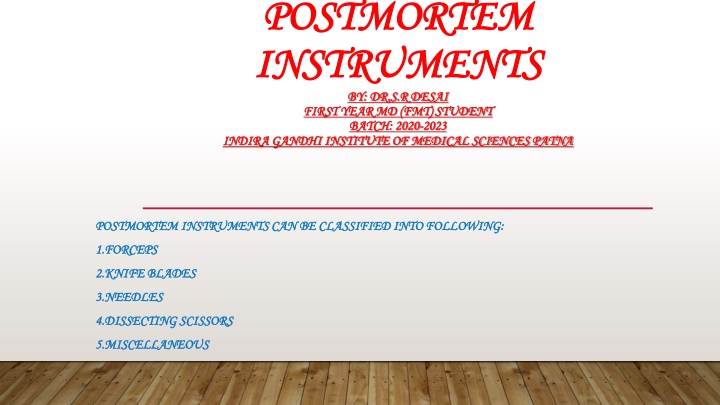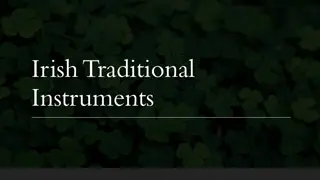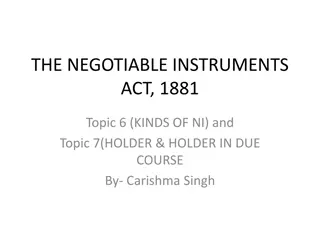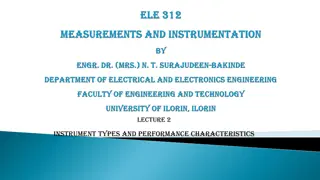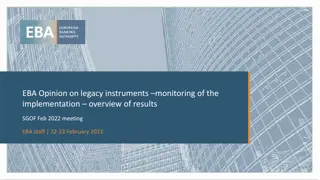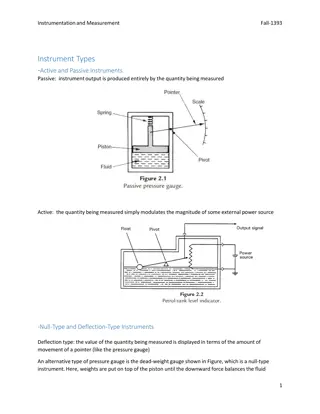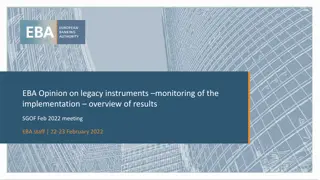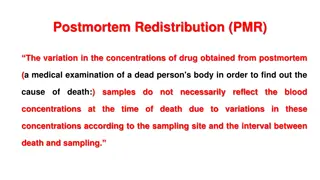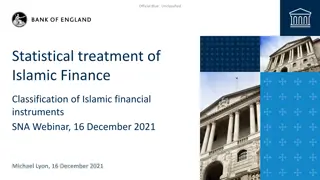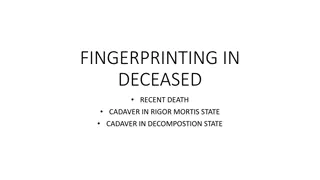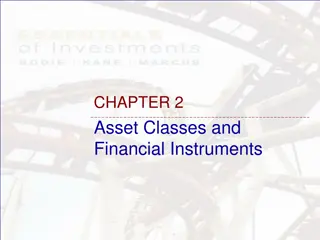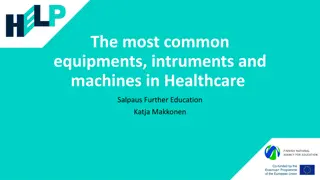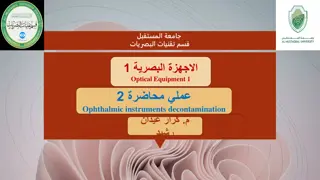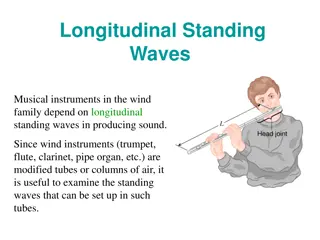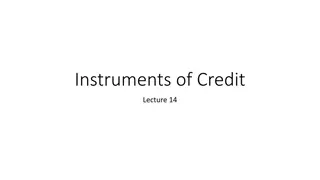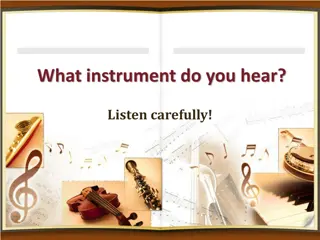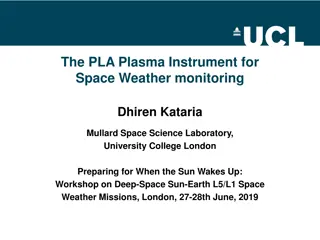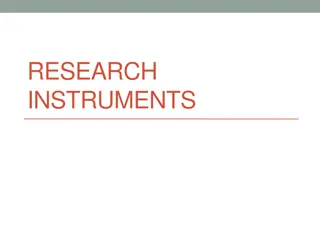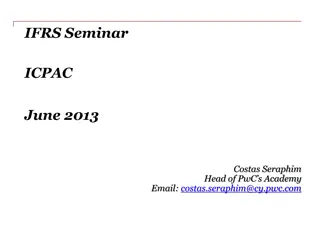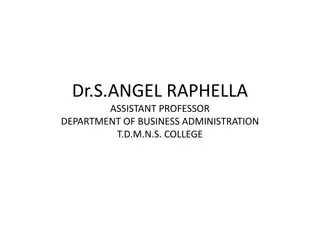Overview of Postmortem Instruments and Equipment
In this comprehensive guide, first-year MD student Dr. S.R. Desai classifies postmortem instruments into categories such as forceps, knife blades, needles, dissecting scissors, and miscellaneous items. The article delves into the functions of forceps and different types like toothed forceps, smooth atraumatic forceps, and DeBakey forceps. It also highlights the importance of each instrument in facilitating the manipulation of anatomical structures during postmortem examinations.
Download Presentation

Please find below an Image/Link to download the presentation.
The content on the website is provided AS IS for your information and personal use only. It may not be sold, licensed, or shared on other websites without obtaining consent from the author.If you encounter any issues during the download, it is possible that the publisher has removed the file from their server.
You are allowed to download the files provided on this website for personal or commercial use, subject to the condition that they are used lawfully. All files are the property of their respective owners.
The content on the website is provided AS IS for your information and personal use only. It may not be sold, licensed, or shared on other websites without obtaining consent from the author.
E N D
Presentation Transcript
POSTMORTEM POSTMORTEM INSTRUMENTS INSTRUMENTS BY: DR.S.R DESAI BY: DR.S.R DESAI FIRST YEAR MD (FMT) STUDENT FIRST YEAR MD (FMT) STUDENT BATCH: 2020 BATCH: 2020- -2023 INDIRA GANDHI INSTITUTE OF MEDICAL SCIENCES PATNA INDIRA GANDHI INSTITUTE OF MEDICAL SCIENCES PATNA 2023 POSTMORTEM POSTMORTEM INSTRUMENTS CAN BE CLASSIFIED INTO FOLLOWING: INSTRUMENTS CAN BE CLASSIFIED INTO FOLLOWING: 1.FORCEPS 1.FORCEPS 2.KNIFE BLADES 2.KNIFE BLADES 3.NEEDLES 3.NEEDLES 4.DISSECTING SCISSORS 4.DISSECTING SCISSORS 5.MISCELLANEOUS 5.MISCELLANEOUS
POSTMORTEM POSTMORTEM EQUIPMENT IN A NUTSHELL EQUIPMENT IN A NUTSHELL
1.FORCEPS 1.FORCEPS Facilitate manipulation of anatomical structures Facilitate manipulation of anatomical structures Stabilize tissue & assist in dissection Stabilize tissue & assist in dissection All forceps perform essentially the same function but differ in design of their tips and their intrinsic All forceps perform essentially the same function but differ in design of their tips and their intrinsic delicacy of form. delicacy of form.
TYPES OF FORCEPS TYPES OF FORCEPS Toothed forceps Toothed forceps Smooth atraumatic forceps Smooth atraumatic forceps DeBakey Forceps DeBakey Forceps Fine Fine- -toothed Adson forceps toothed Adson forceps Stout Stout- -toothed Bonney forceps toothed Bonney forceps
TOOTHED FORCEPS Are useful for stabilizing and moving tissues, Are useful for stabilizing and moving tissues, Traumatic,may Traumatic,may lacerate the structures lacerate the structures
SMOOTH ATRAUMATIC FORCEPS Are more appropriate when trauma must be Are more appropriate when trauma must be avoided as in exploring traumatized avoided as in exploring traumatized structures,or structures,or for delicate vascular for delicate vascular manipulation. manipulation.
DEBAKEY FORCEPS These are good general use instruments with These are good general use instruments with atraumatic flat tips and tiny fine serrations atraumatic flat tips and tiny fine serrations
FINE-TOOTHED ADSON FORCEPS More commonly used in surgery but may be More commonly used in surgery but may be used in used in postmortem postmortem also. also. Ideal for skin closure Ideal for skin closure
STOUT-TOOTHED BONNEY FORCEPS More commonly used in surgery but may be More commonly used in surgery but may be used in PM also. used in PM also. Bonney is excellent for facial closure after Bonney is excellent for facial closure after facial dissection. facial dissection.
2.KNIFE BLADES 2.KNIFE BLADES Bard Bard- -Parker knife blades are used commonly, in India Parker knife blades are used commonly, in India Attached to standard no.3 Bard Attached to standard no.3 Bard- -Parker handle Parker handle In surgical practice abdominal or thoracic incisions are In surgical practice abdominal or thoracic incisions are typically made with no.10,20 or 22 blades typically made with no.10,20 or 22 blades More delicate incisions require smaller no.15 blade, More delicate incisions require smaller no.15 blade, however in PM such distinction is more or less however in PM such distinction is more or less academic in nature. academic in nature. In surgery sharp In surgery sharp- -tipped no.11 blade is ideal for entering tipped no.11 blade is ideal for entering and draining an abscess and arteriotomy for vascular and draining an abscess and arteriotomy for vascular procedure. procedure.
3 3. .NEEDLES NEEDLES
NEEDLES CONTINUED NEEDLES CONTINUED Straight needles Straight needles - -are rarely used in PM but may be used if curved not available. are rarely used in PM but may be used if curved not available. Curved needles Curved needles usually 1/2 or 3/8 circle. usually 1/2 or 3/8 circle. sewing in deep hole requires 5/8 circle needle sewing in deep hole requires 5/8 circle needle smaller structure require circle smaller structure require circle French eye needles have eye for threading French eye needles have eye for threading Surgeons mostly use swaged needles (needle suture combination) Surgeons mostly use swaged needles (needle suture combination) rarely used in PM. rarely used in PM. Needle tips Needle tips- -Tapered or Cutting, former are circumferentially smooth while latter are triangular in cross section and cut Tapered or Cutting, former are circumferentially smooth while latter are triangular in cross section and cut through tissues like tiny through tissues like tiny knife.More knife.More tough tissues like mummified bodies may require cutting needles. tough tissues like mummified bodies may require cutting needles.
4.DISSECTING SCISSORS 4.DISSECTING SCISSORS (CUTTING OF (CUTTING OF TISSUES,GENERAL TISSUES,GENERAL PURPOSE CUTTING) PURPOSE CUTTING) Iris scissors Iris scissors Mayo scissors Mayo scissors Metzenbaum scissors Metzenbaum scissors Richter Dissecting scissors Richter Dissecting scissors Scissors with one pointed and one blunt end. Scissors with one pointed and one blunt end.
IRIS SCISSORS IRIS SCISSORS Fine,used Fine,used for delicate for delicate dissection and cutting. dissection and cutting.
MAYO SCISSORS MAYO SCISSORS Are sturdier Are sturdier Used for cutting dense tissue like fascia, scar or Used for cutting dense tissue like fascia, scar or tendons tendons
METZENBAUM SCISSORS METZENBAUM SCISSORS Are versatile, general use instruments Are versatile, general use instruments
RICHTER DISSECTING SCISSORS RICHTER DISSECTING SCISSORS Comes with angular blades, one sharp and one Comes with angular blades, one sharp and one blunt point. blunt point. Useful for reaching inaccessible areas e.g. Useful for reaching inaccessible areas e.g. Below pubis to cut out prostate. Below pubis to cut out prostate.
SCISSORS WITH ONE POINTED AND ONE BLUNT END SCISSORS WITH ONE POINTED AND ONE BLUNT END Used for cutting tough tissue,fibrotic scars etc.
5.MISCELLANEOUS 5.MISCELLANEOUS Autopsy table Autopsy table Chisel Chisel Cartilage knives Cartilage knives Hammer Hammer Dissecting knives Dissecting knives Skull key Skull key Amputation knives Amputation knives Probes Probes Enterotome Enterotome Large clamps Large clamps Bone saw Bone saw
AUTOPSY TABLE AUTOPSY TABLE
CARTILAGE KNIVES CARTILAGE KNIVES
DISSECTING KNIVES DISSECTING KNIVES
AMPUTATION KNIVES AMPUTATION KNIVES
ENTEROTOME ENTEROTOME
LARGE CLAMPS LARGE CLAMPS
BONE SAW BONE SAW
CHISEL CHISEL
HAMMER HAMMER
SKULL KEY SKULL KEY
PROBES PROBES FOR PATIENT LISTENING FOR PATIENT LISTENING
